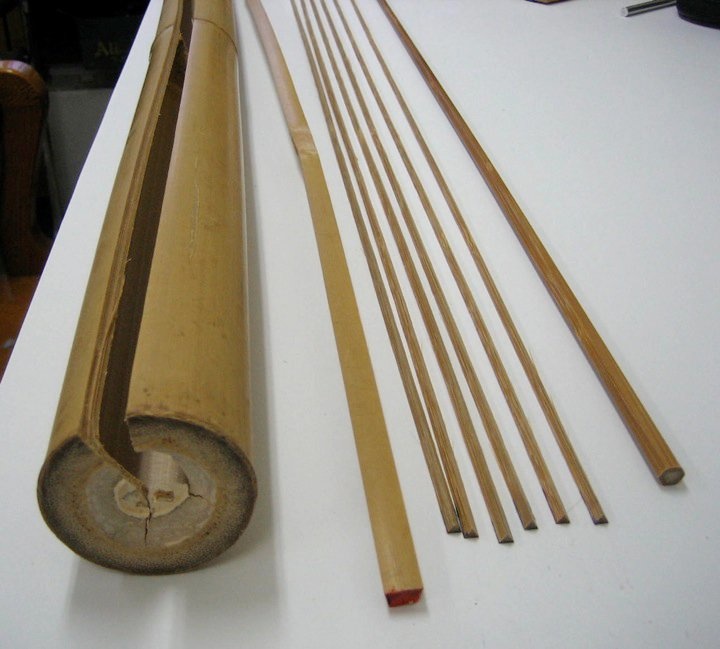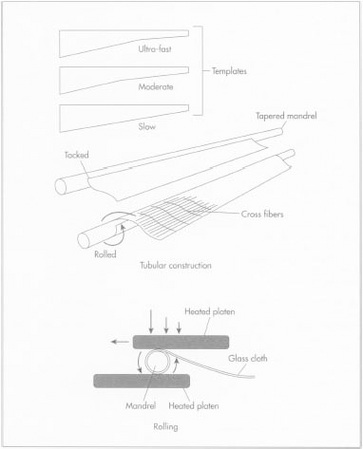Fly Rod Construction 101
- Posted on
- By Dirk Fischbach with The Painted Trout
- Posted in fly rod construction, fly rods
- 0

A quick historical primer on fly rod construction.
Fly Rod Construction - a simple primer
To understand the importance of new materials and techniques in the construction of fly rods, it is helpful to have a solid grasp of the basics of how a fly rod is made. In today’s world, there are three basic types of rods: Those made of bamboo, those made of fiberglass, and those made of carbon fiber (graphite).
Bamboo rod construction involves several steps including splitting and heating a culm of raw bamboo. The craftsman then splits the culm into strips and each strip is either milled or hand-planed (or a combination) to achieve the desired taper. The strips are then glued together (generally six strips are used for each section, although rods of four- and five-strip construction are not uncommon) to make the blank. The process is lengthy, and most bamboo rods take about 60 to 80 hours to complete.

Fiberglass and carbon fiber rods have a very similar construction to each other. Both types are made from a resin-infused cloth wrapped around a metal mandrel. *
The resin-infused cloth is called pre-preg, and it is cut into somewhat triangular pieces that taper from top to bottom, called flags. Each section of a rod will have its own flag — thus a two-piece rod has two flags and a four-piece rod will have four.
The maker then tacks (adheres) the flag to the mandrel, which is placed on a platen that rolls its edge around the mandrel (to visualize this, imagine taking a piece of paper and aligning it along a dowel and taping it in place [if you held the dowel up, the paper would hang off like a flag, hence the name]; now take the dowel between your hands and slide one hand forward the other back — it will roll the paper onto the dowel).
The mandrel with the pre-preg wrapped around it is then heated to cure the resin. Once cooled, the mandrel is then removed and the hollow-tube blank section is the result.
The blank sections can be sanded or not; painted or not, as desired, to prepare them for the placement of the guides, handle, reel seat, etc.
*This is a simplification of the process. Steps such as securing the pre-preg-wrapped mandrel with cellophane, lapping of the ferrules for fit, and other important but highly technical aspects of the construction, as well the discussion of scrim (the material wrapped at an angle to the main fibers in the pre-preg to create hoop strength) were skipped to keep the explanation more basic and understandable to those being introduced to rod construction.

Comments
Be the first to comment...